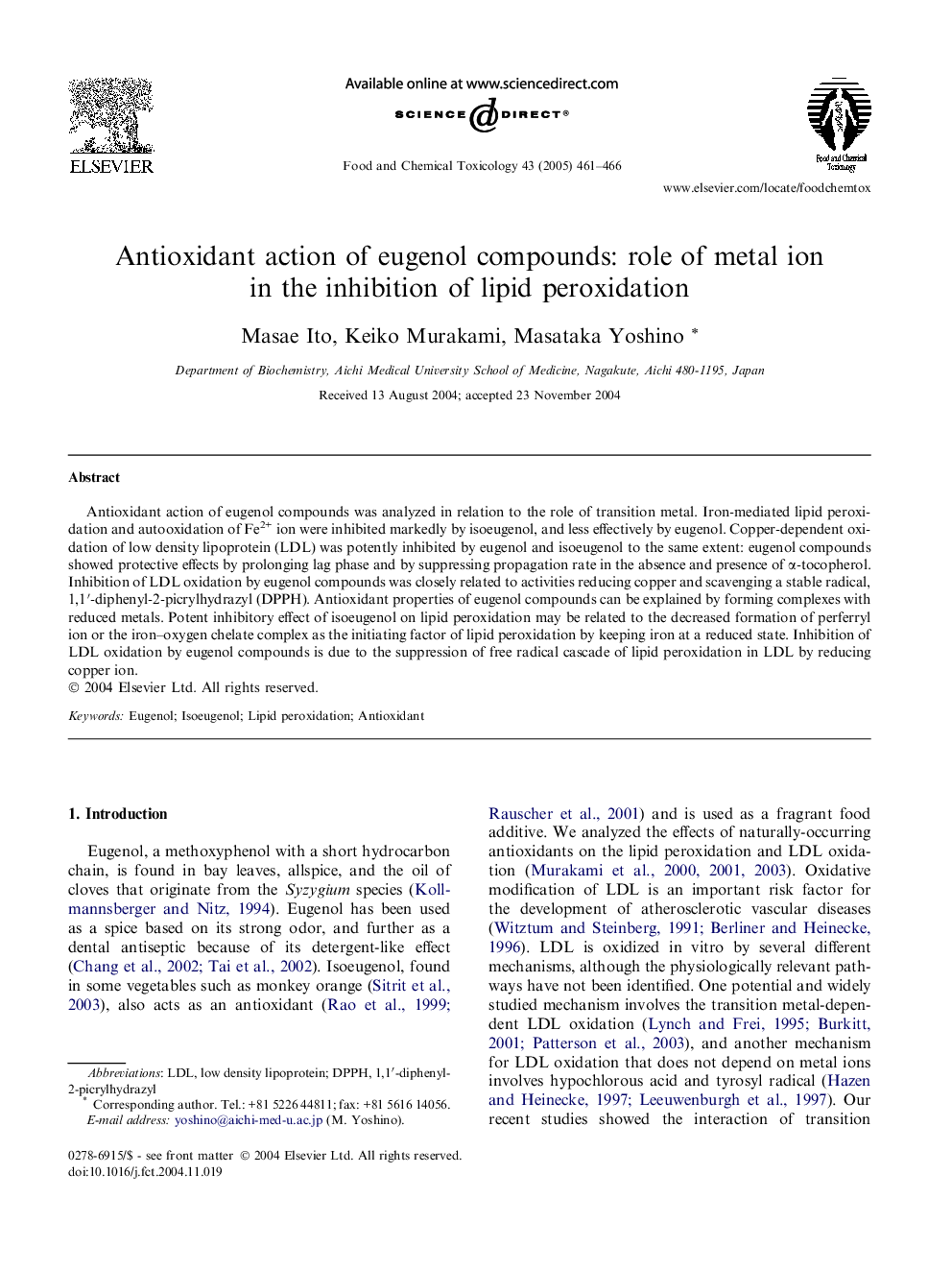| Article ID | Journal | Published Year | Pages | File Type |
|---|---|---|---|---|
| 9031125 | Food and Chemical Toxicology | 2005 | 6 Pages |
Abstract
Antioxidant action of eugenol compounds was analyzed in relation to the role of transition metal. Iron-mediated lipid peroxidation and autooxidation of Fe2+ ion were inhibited markedly by isoeugenol, and less effectively by eugenol. Copper-dependent oxidation of low density lipoprotein (LDL) was potently inhibited by eugenol and isoeugenol to the same extent: eugenol compounds showed protective effects by prolonging lag phase and by suppressing propagation rate in the absence and presence of α-tocopherol. Inhibition of LDL oxidation by eugenol compounds was closely related to activities reducing copper and scavenging a stable radical, 1,1â²-diphenyl-2-picrylhydrazyl (DPPH). Antioxidant properties of eugenol compounds can be explained by forming complexes with reduced metals. Potent inhibitory effect of isoeugenol on lipid peroxidation may be related to the decreased formation of perferryl ion or the iron-oxygen chelate complex as the initiating factor of lipid peroxidation by keeping iron at a reduced state. Inhibition of LDL oxidation by eugenol compounds is due to the suppression of free radical cascade of lipid peroxidation in LDL by reducing copper ion.
Related Topics
Life Sciences
Agricultural and Biological Sciences
Food Science
Authors
Masae Ito, Keiko Murakami, Masataka Yoshino,
